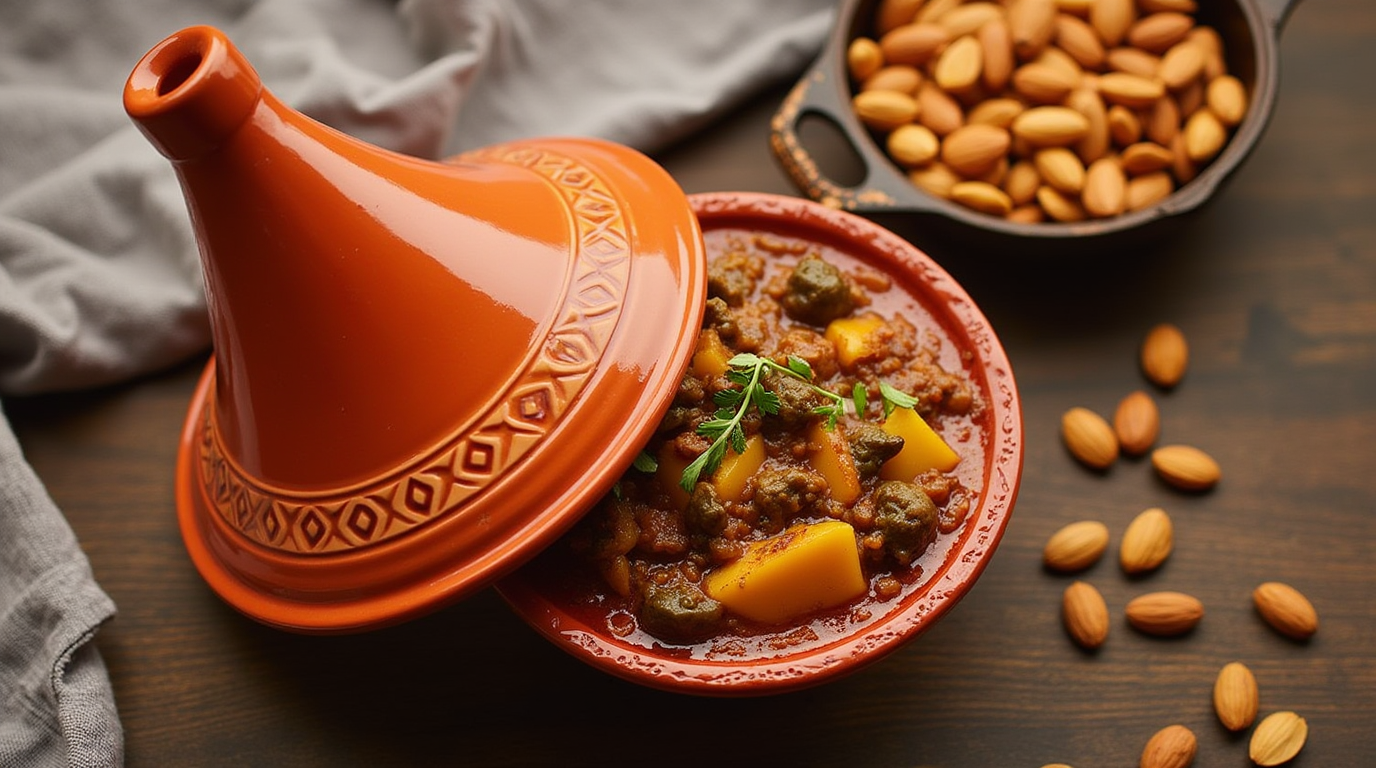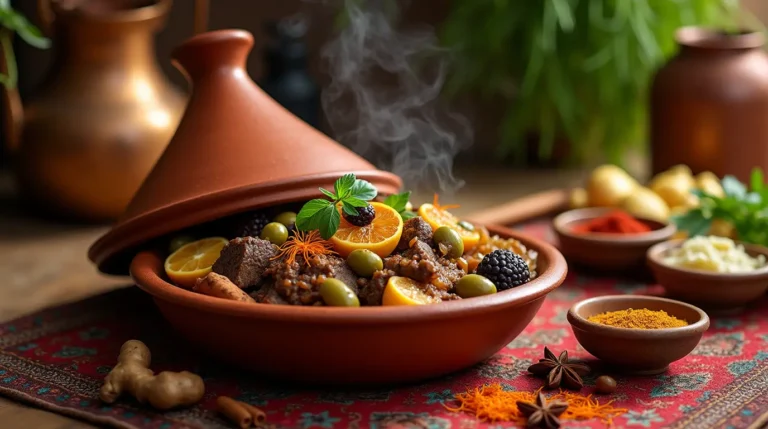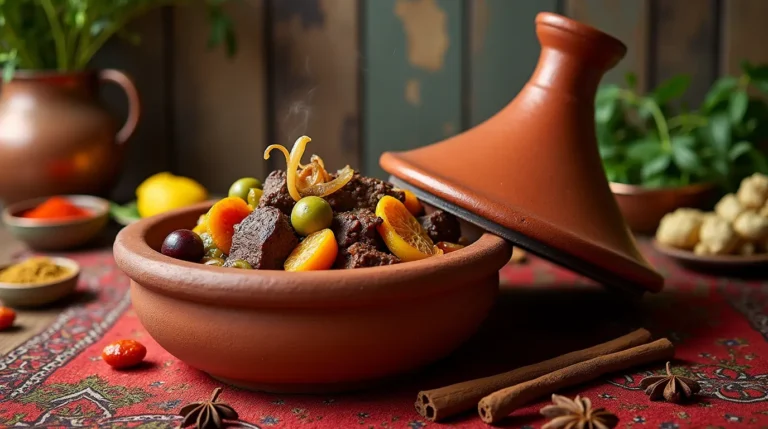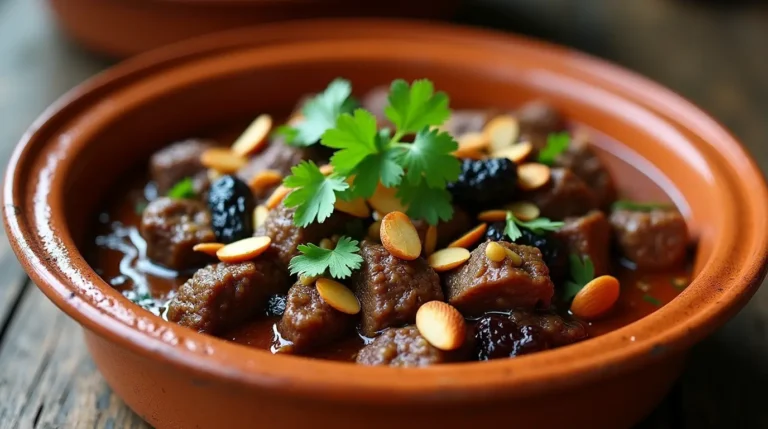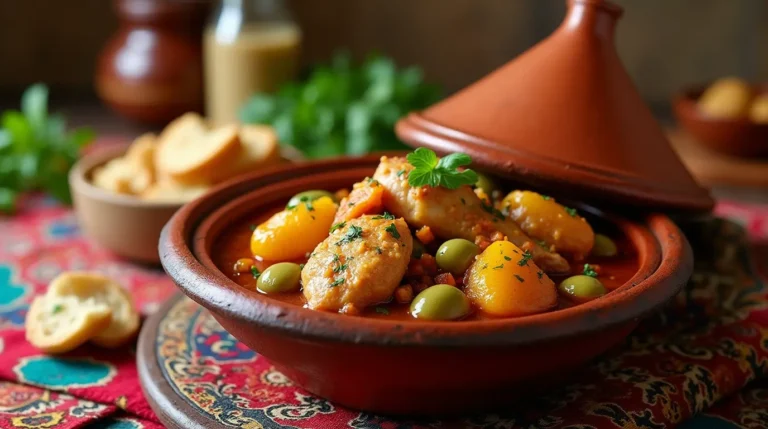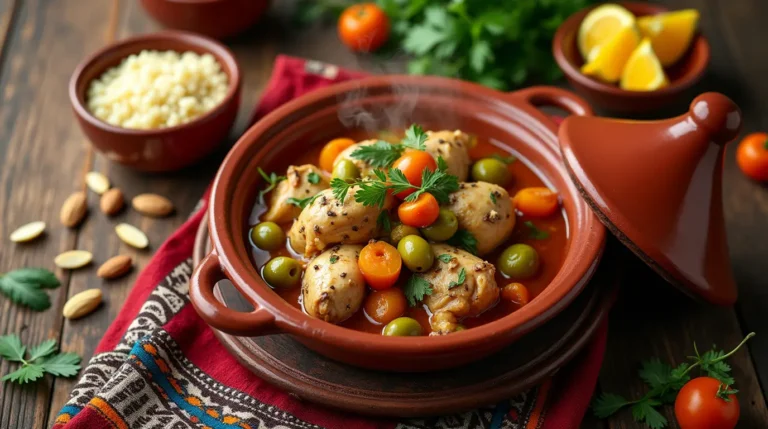How to Make the Best Beef Tagine: A Step-by-Step Guide
There’s something magical about lifting the conical lid of a tagine to reveal a bubbling stew of tender beef, aromatic spices, and sweet dried fruits. This iconic Moroccan dish isn’t just delicious—it’s a journey into centuries of North African culinary tradition right in your own kitchen. Whether you’re a seasoned home cook or just starting your culinary adventures, this step-by-step guide will walk you through creating an authentic beef tagine that will transport your taste buds straight to Marrakech.
What Makes a Tagine Special?
Before we dive into the cooking process, let’s talk about what makes this dish so unique. The word “Beef tagine” refers to both the dish itself and the distinctive clay cooking vessel with its conical lid. This ingenious design creates a natural convection cycle during cooking: steam rises, condenses on the lid, and drips back down, continuously basting the ingredients and creating incredibly tender meat without added liquid.
Don’t worry if you don’t own a traditional clay Beef tagine—a Dutch oven or heavy-bottomed pot with a tight-fitting lid will work wonderfully too. The most important elements are the slow cooking method and the beautiful blend of spices that give tagine its distinctive flavor profile.
Ingredients You’ll Need
For 4-6 servings:
For the meat and marinade:
- 2 pounds (900g) beef chuck or stewing beef, cut into 1.5-inch cubes
- 2 tablespoons olive oil
- 1 large onion, finely chopped
- 4 garlic cloves, minced
- 2-inch piece of fresh ginger, grated
- 1 cinnamon stick
- 2 teaspoons ground cumin
- 2 teaspoons ground coriander
- 1 teaspoon ground turmeric
- 1 teaspoon paprika
- 1/2 teaspoon cayenne pepper (adjust to your spice preference)
- 1/4 teaspoon ground cloves
- 1 tablespoon honey
- 1 tablespoon tomato paste
- 2 cups beef or chicken stock
For the vegetables and garnish:
- 3 carrots, peeled and cut into chunks
- 2 sweet potatoes, peeled and cut into chunks (or regular potatoes)
- 1 red bell pepper, cut into large pieces
- 1 cup dried apricots
- 1/2 cup green olives
- 1/4 cup golden raisins
- Zest and juice of 1 lemon
- 1/2 cup fresh cilantro, chopped
- 1/4 cup fresh mint, chopped
- 1/4 cup sliced almonds, toasted
- Salt and freshly ground black pepper, to taste
Let’s Start Cooking!
1. Prepare and Marinate the Beef
First things first—great beef tagine starts with properly prepared meat. Pat your beef cubes dry with paper towels to ensure they’ll brown properly. In a small bowl, mix 1 teaspoon each of cumin, coriander, turmeric, 1/2 teaspoon salt, and 1/4 teaspoon black pepper. Sprinkle this mixture over your beef and toss to coat evenly. If you have time, let the meat marinate for 1-2 hours in the refrigerator, or even overnight for maximum flavor development.
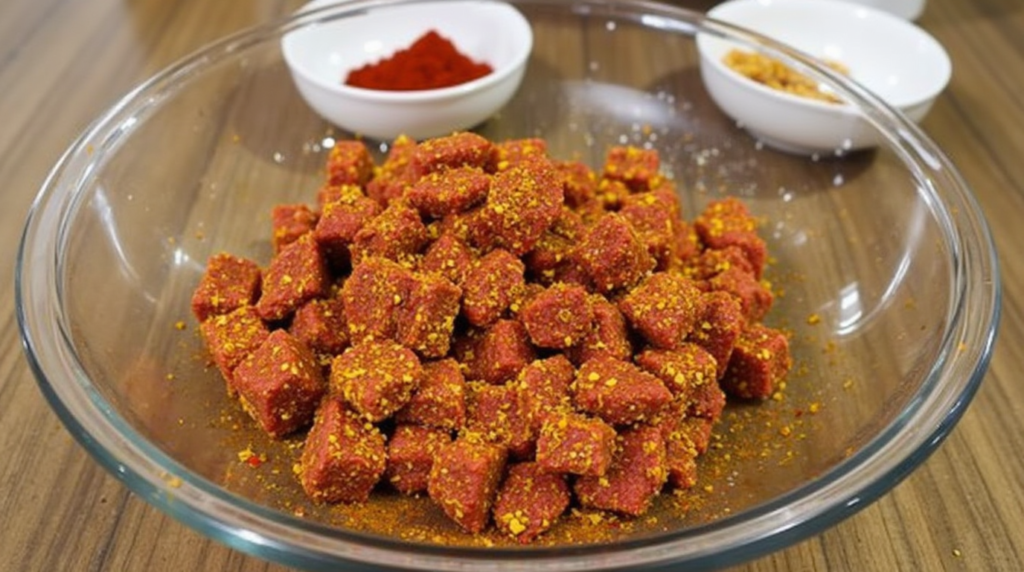
2. Brown the Meat
Heat your tagine base, Dutch oven, or heavy-bottomed pot over medium-high heat. Add 1 tablespoon of olive oil. When the oil is shimmering, add the beef in batches (don’t overcrowd the pan) and sear until browned on all sides, about 3-4 minutes per batch. This step is crucial for developing deep flavor, so resist the urge to stir too frequently. Transfer the browned meat to a plate and set aside.
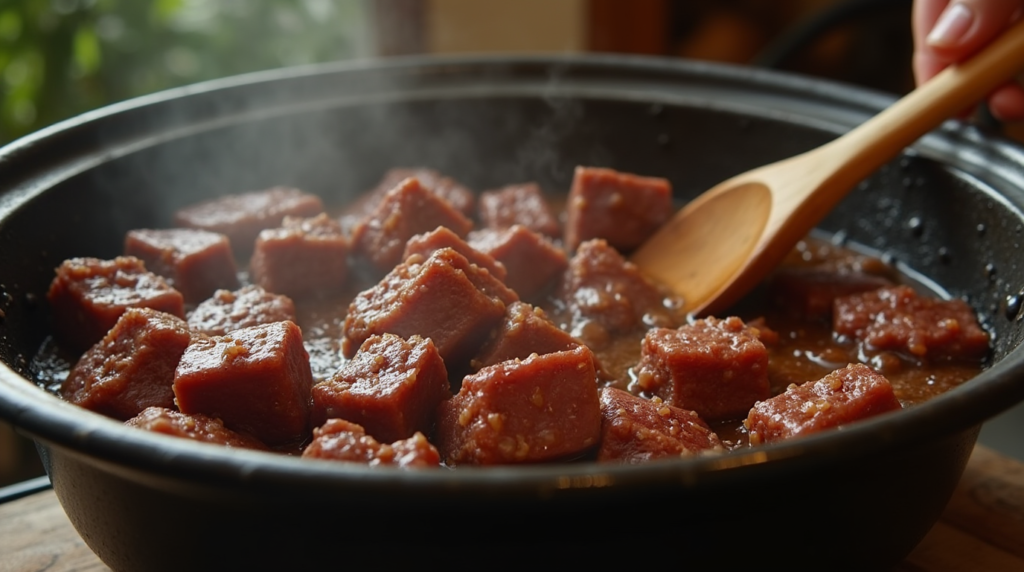
3. Create the Aromatic Base
In the same pot, add the remaining tablespoon of olive oil if needed. Add the chopped onions and cook until soft and translucent, about 5 minutes. Add the minced garlic and grated ginger, cooking for another minute until fragrant. This aromatic base will form the foundation of your beef tagine’s complex flavor profile.
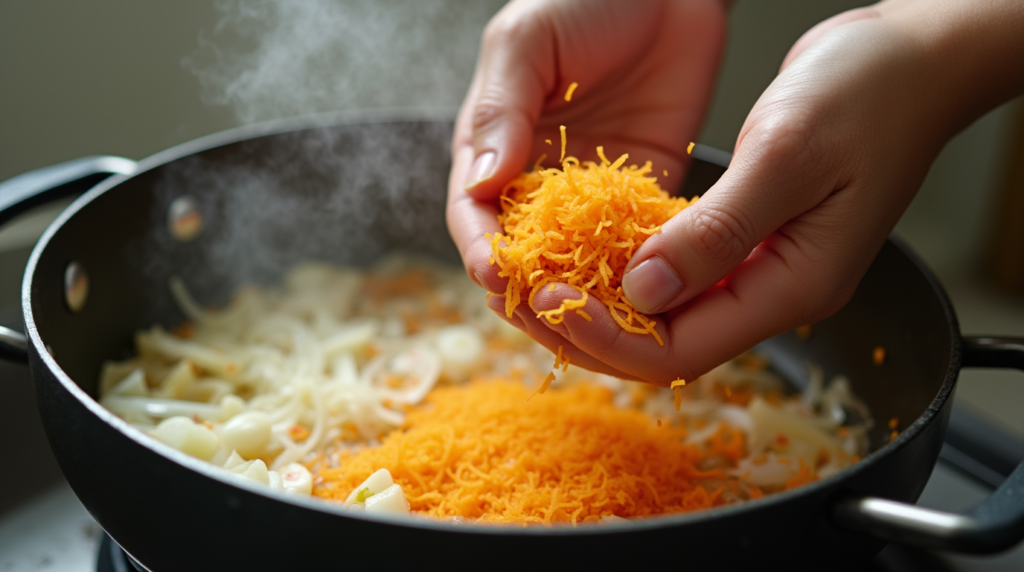
4. Bloom the Spices
Now it’s time for the spice magic! Add the remaining ground cumin, coriander, turmeric, paprika, cayenne, ground cloves, and the cinnamon stick to the pot. Stir constantly for about 30 seconds until the spices are fragrant—but be careful not to burn them, as this can make your beef tagine bitter. The blooming process releases the essential oils in the spices, intensifying their flavors.
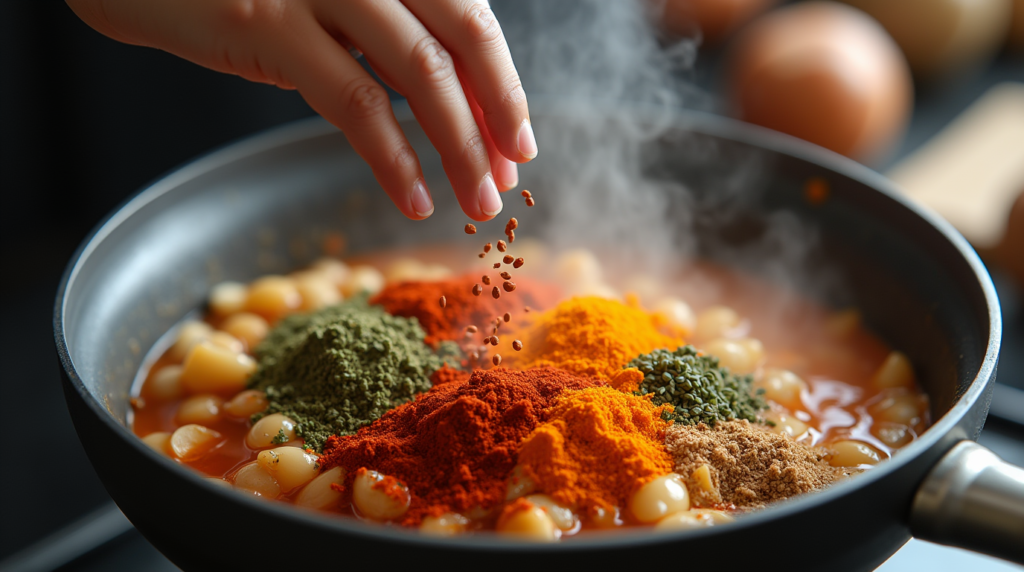
5. Build the Sauce
Add the tomato paste to the pot and cook for 1-2 minutes, stirring frequently. Then pour in the beef stock, scraping the bottom of the pot with a wooden spoon to release any browned bits (that’s pure flavor!). Stir in the honey, which will help balance the acidity and add a subtle sweetness that complements the spices. Bring the mixture to a gentle simmer.

6. Return the Meat and Begin Slow Cooking
Return the browned beef and any accumulated juices to the pot. The meat should be nearly covered with liquid—if not, add a little more stock or water. Bring to a simmer, then reduce the heat to low. If using a traditional beef tagine, cover with the conical lid. If using a Dutch oven or pot, cover with a tight-fitting lid. Allow the tagine to simmer gently for 1.5 hours, or until the meat is becoming tender.
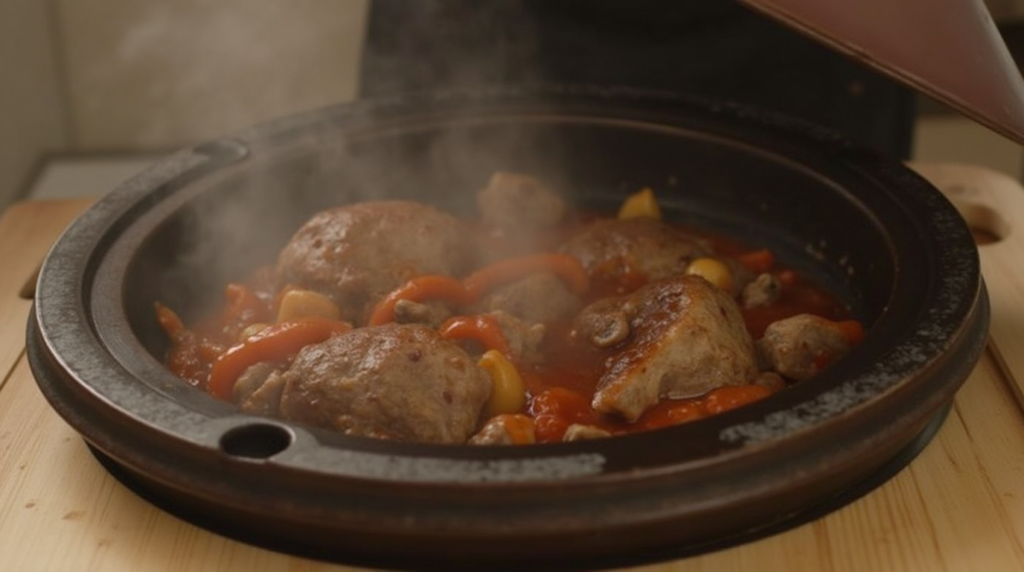
7. Add the Vegetables
After the initial slow-cooking period, it’s time to add your vegetables. Gently stir in the carrots, sweet potatoes, and bell pepper. These will absorb the flavors of the sauce while adding their own sweetness to the dish. Continue to simmer, covered, for another 30 minutes, or until the vegetables are tender but not mushy.

8. Incorporate the Fruits
Now for one of the signature elements of a beef tagine—the dried fruits! Add the dried apricots, golden raisins, and green olives to the pot. The contrast between the sweet fruits and savory meat is what makes tagine so uniquely delicious. Continue to simmer for about 15 more minutes, allowing the fruits to plump up and infuse the sauce with their flavors.

9. Final Seasoning
Remove your tagine from the heat. Stir in the lemon zest and juice, which will brighten all the flavors. Taste and adjust the seasoning with salt and pepper as needed. You might also want to add a touch more honey if you prefer a sweeter tagine, or a pinch of cayenne for more heat. Remember that the flavors will continue to develop as the tagine rests.
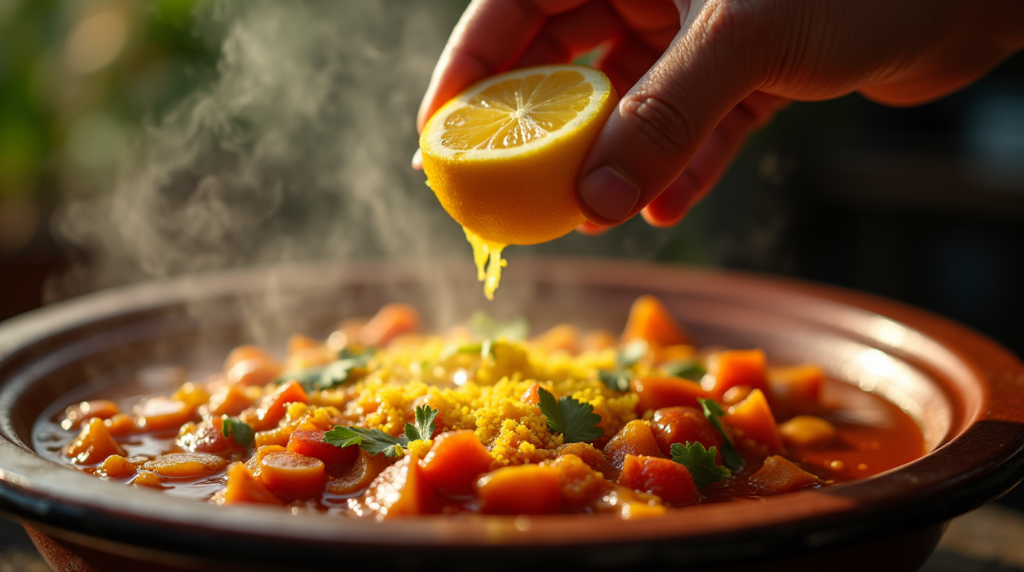
10. Prepare for Serving
Let your tagine rest, covered, for about 10 minutes before serving. This allows the flavors to meld and the sauce to thicken slightly. Meanwhile, toast your sliced almonds in a dry skillet over medium heat until golden and fragrant, about 3-4 minutes, watching carefully so they don’t burn.
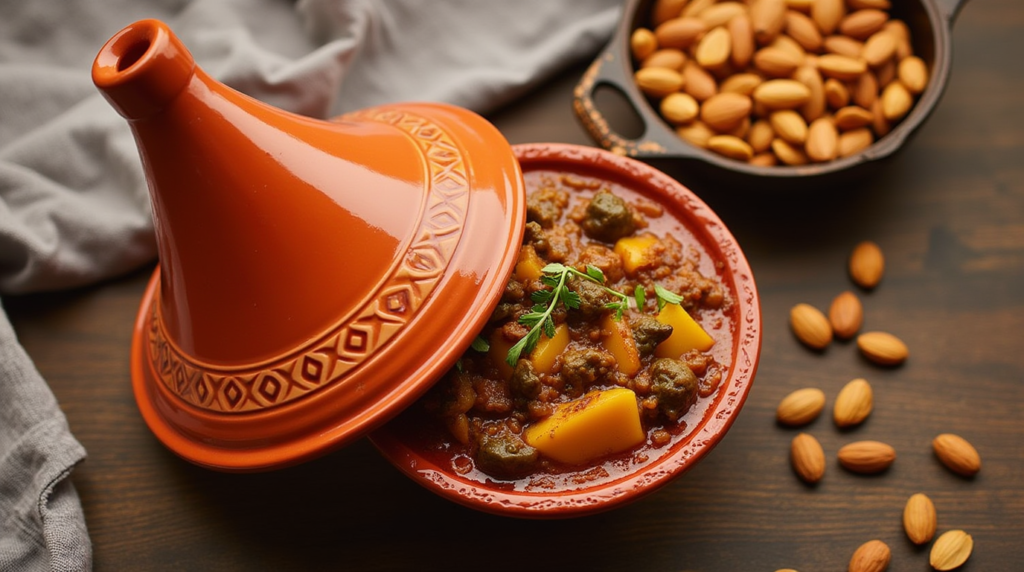
11. The Grand Presentation
The presentation of tagine is part of its charm! If you’ve cooked in a traditional tagine, bring the whole vessel to the table. For maximum impact, remove the conical lid at the table, releasing the cloud of aromatic steam in front of your guests. If you’ve used a Dutch oven, transfer the tagine to a large, shallow serving dish with a slight rim to catch the delicious sauce.
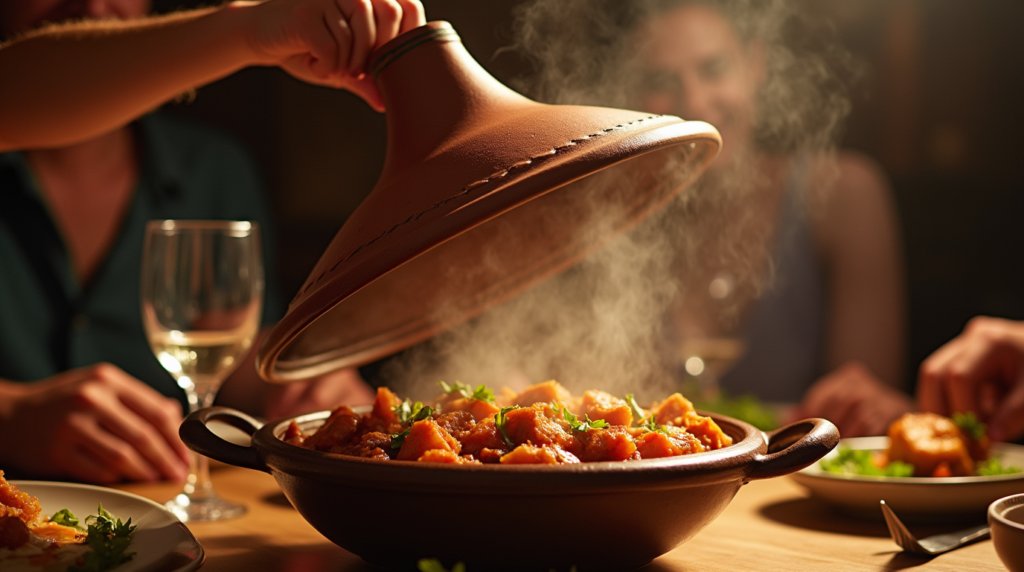
12. Garnish and Serve
Sprinkle the tagine with fresh chopped cilantro, mint, and the toasted almonds. These fresh elements provide a bright contrast to the rich, slow-cooked stew. Traditionally, tagine is served with couscous or crusty bread to soak up the flavorful sauce. For an authentic experience, Moroccans often eat directly from the communal dish, using pieces of bread to scoop up the stew.
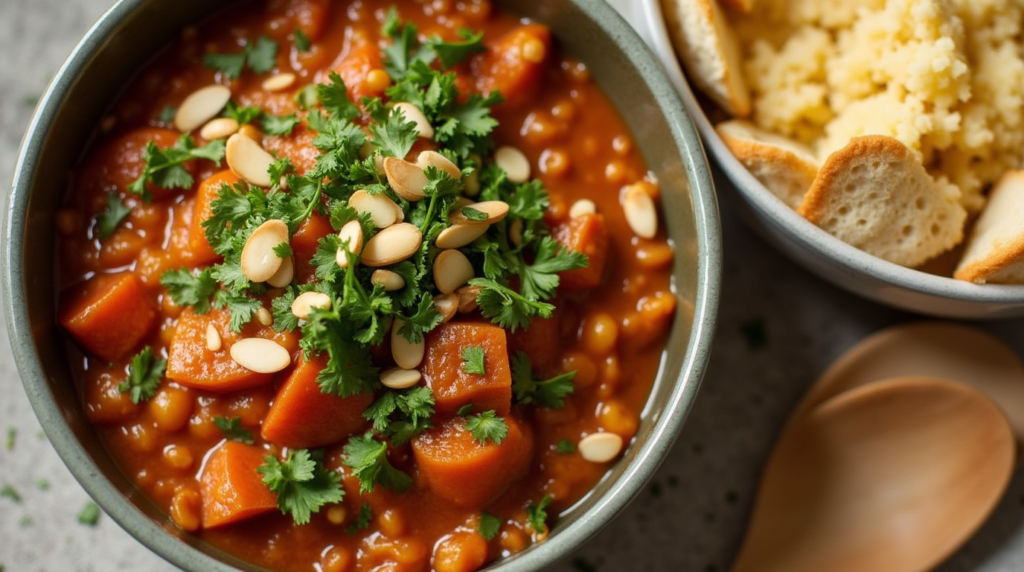
Tips for Tagine Success
- Be patient: The magic of tagine happens with slow cooking, allowing the flavors to develop and the meat to become incredibly tender.
- Balance is key: A great tagine has a perfect balance of sweet, savory, and spicy elements. Don’t be afraid to adjust the seasoning to your taste.
- Make ahead: Like many stews, tagine actually tastes better the next day after the flavors have had time to meld. It reheats beautifully.
- Clay tagine care: If using a traditional clay tagine, remember to soak it in water before its first use, and never place it directly on high heat—use a diffuser or low heat only.
Variations to Try
Once you’ve mastered the basic beef tagine, you can experiment with different variations:
- Lamb Tagine: Substitute lamb shoulder for the beef for an equally traditional option.
- Vegetable Tagine: For a vegetarian version, omit the meat and double the vegetables, adding chickpeas for protein.
- Preserved Lemon: Add chopped preserved lemon rind during the last 30 minutes of cooking for an authentic Moroccan touch.
- Prune and Almond: Replace the apricots with prunes and increase the almonds for a rich, nutty variation.
Final Thoughts
Creating an authentic beef tagine is more than just following a recipe—it’s about embracing the unhurried, aromatic journey that this dish represents. As the gentle heat works its magic on simple ingredients, transforming them into a complex, flavorful meal, you’re participating in a cooking tradition that has brought people together around communal dishes for centuries.
So take your time, enjoy the process, and savor the remarkable results. Your kitchen will be filled with the enticing aromas of North Africa, and your dining table will become a gateway to one of the world’s most beloved culinary traditions. Enjoy your tagine adventure!

